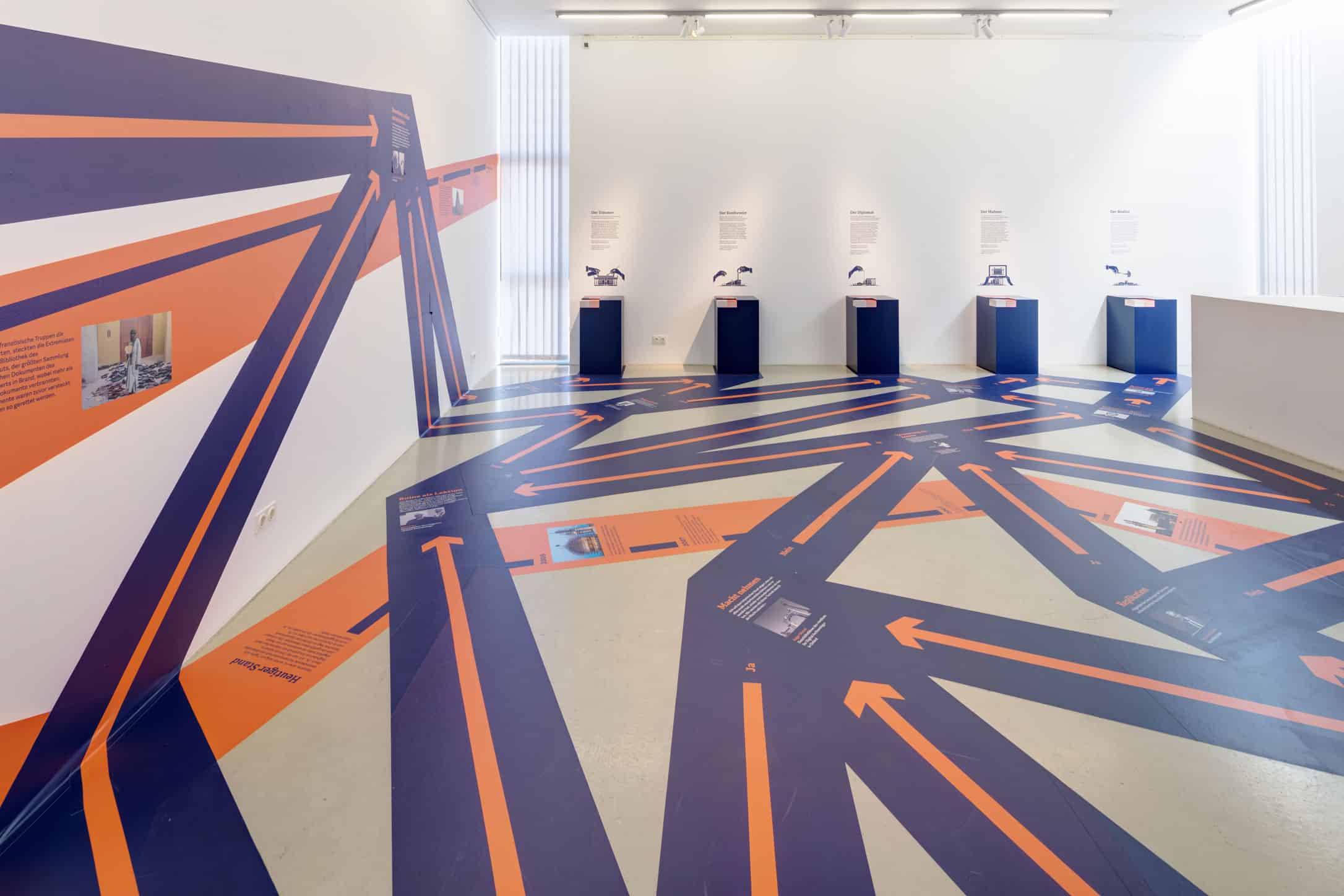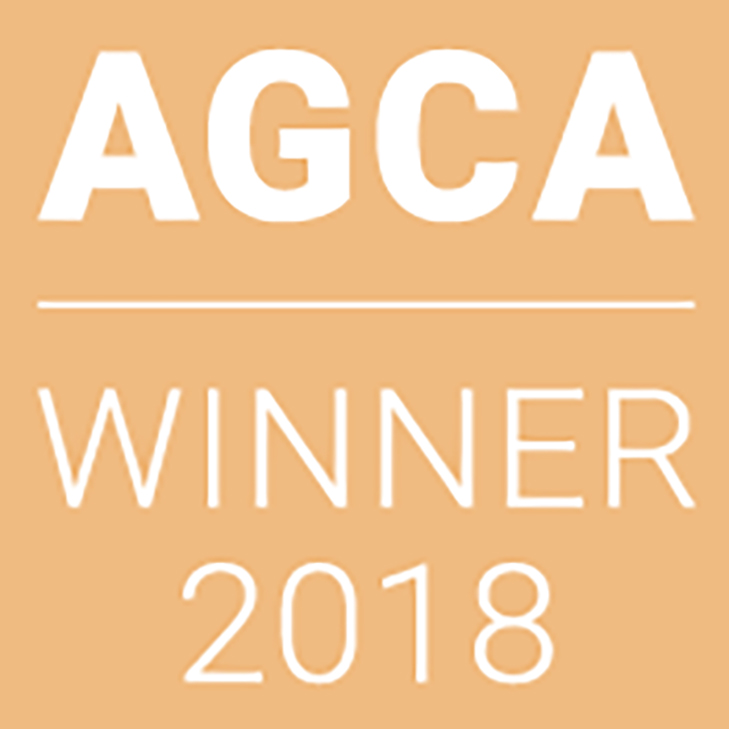Rebuild Palmyra? Future of a Contested World Heritage
Duration
30 June 2017 – 17 September 2017
20 December 2017 – 29 April 2018
Location
Turm zur Katz, Konstanz
Landesmuseum, Braunschweig
Participants
University of Konstanz, HTWG Konstanz
“Rebuild Palmyra?” is a multimedia exhibition about the ancient city of Palmyra and the question of whether its ruins should be reconstructed. The exhibition helps visitors understand both the historical significance of Palmyra and the current debates surrounding the protection of World Heritage. Along the way, they encounter different perspectives and, by the end of the exhibition, are invited to decide for themselves whether the ruined city—now a symbol of the vulnerability of World Heritage—should be rebuilt, and if so, for what reasons. Numerous interactive exhibits offer opportunities for personal engagement with the topic, using cutting-edge technologies such as augmented and virtual reality.
Room 1: In the Media
Upon entering the exhibition, visitors are greeted by a forest of national and international newspaper articles reporting on the destruction of Palmyra in recent years.
The diversity and global reach of this media response to the oasis city’s tragic fate highlight the enduring significance of Palmyra’s ruins today.
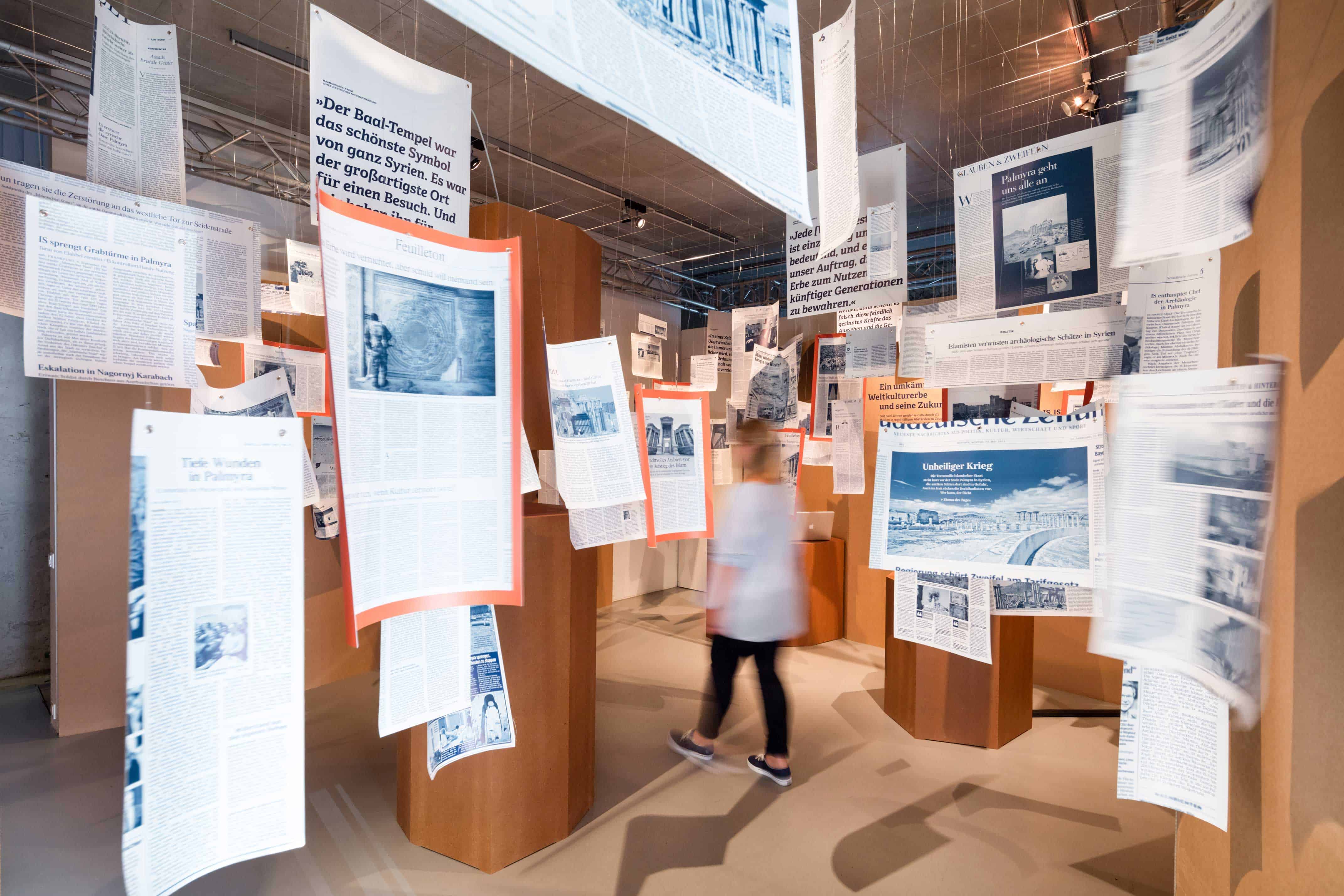
Room 2: History
In the second room, visitors learn more about the history of Palmyra. A timeline presents the oasis city’s journey from a traditional meeting place for nomads to a major trading hub of antiquity, and its rediscovery since the 18th century. Listening stations and tablets provide visitors with in-depth background information.
At an interactive media table, visitors can follow the urban development of the ancient city through the ages. When were which temples and districts built? Visitors control the pace at which they move through the epochs and choose which buildings they want to explore in more detail.
Animated ships, camels, and horses illustrate ancient trade routes on an interactive wall, showing how globalized the trade of luxury goods—such as silk and spices—already was in the early centuries AD.
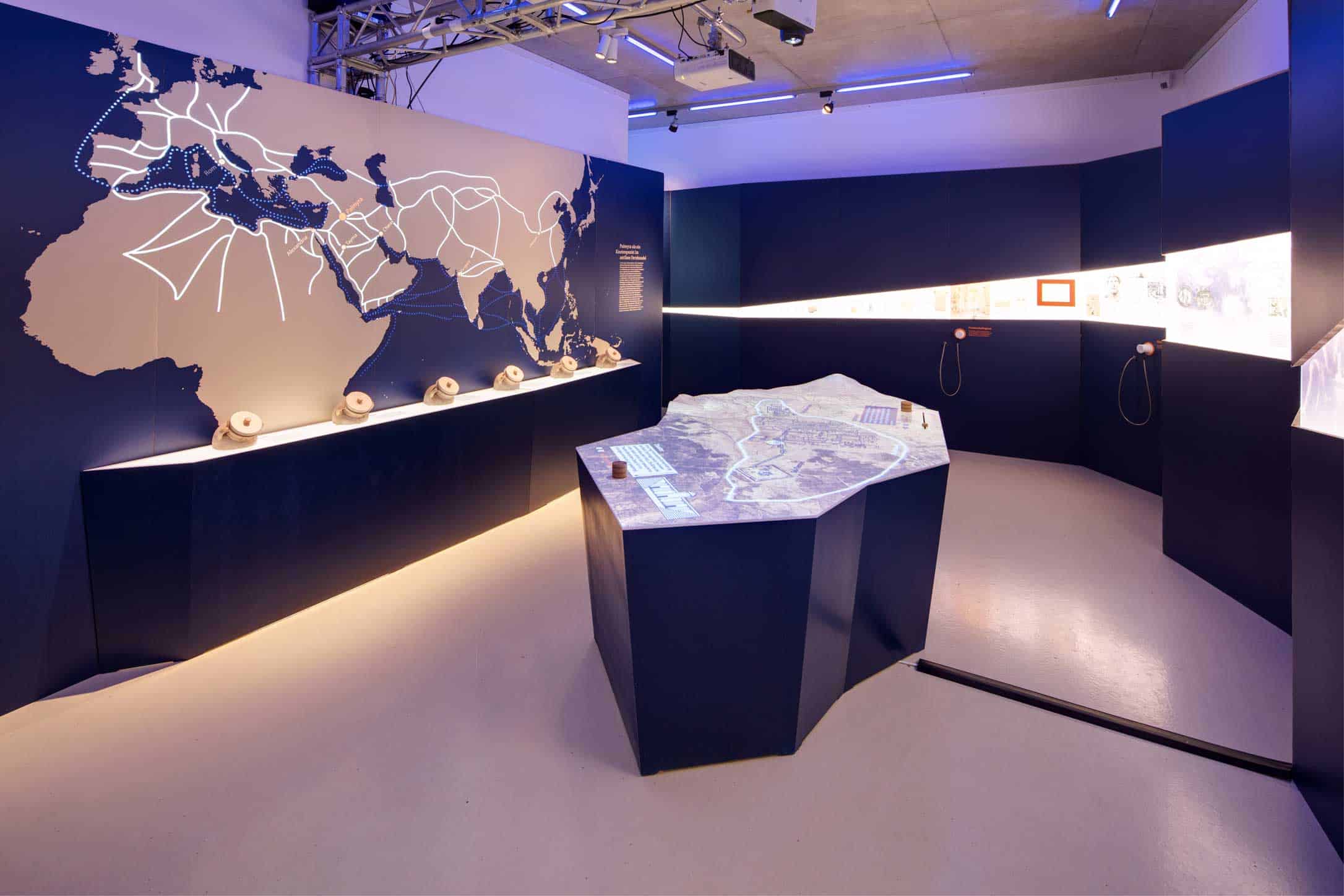
Room 3: Destruction
On the second floor, visitors can compare Palmyra’s most important structures across different historical periods. They move across a large-scale graphic of a satellite image of present-day Palmyra. At the geographically accurate locations, 3D-printed models of the ruins—once magnificent buildings destroyed by Daesh and recreated by the students—are displayed. Through augmented reality, visitors can experience both the state of the buildings before Daesh’s destruction and the reconstructed grandeur of the ancient architecture in three dimensions.
VR binoculars offer another way to explore Palmyra virtually. Using them, visitors can navigate 360° views of the remarkably preserved city as it appeared before the demolitions.
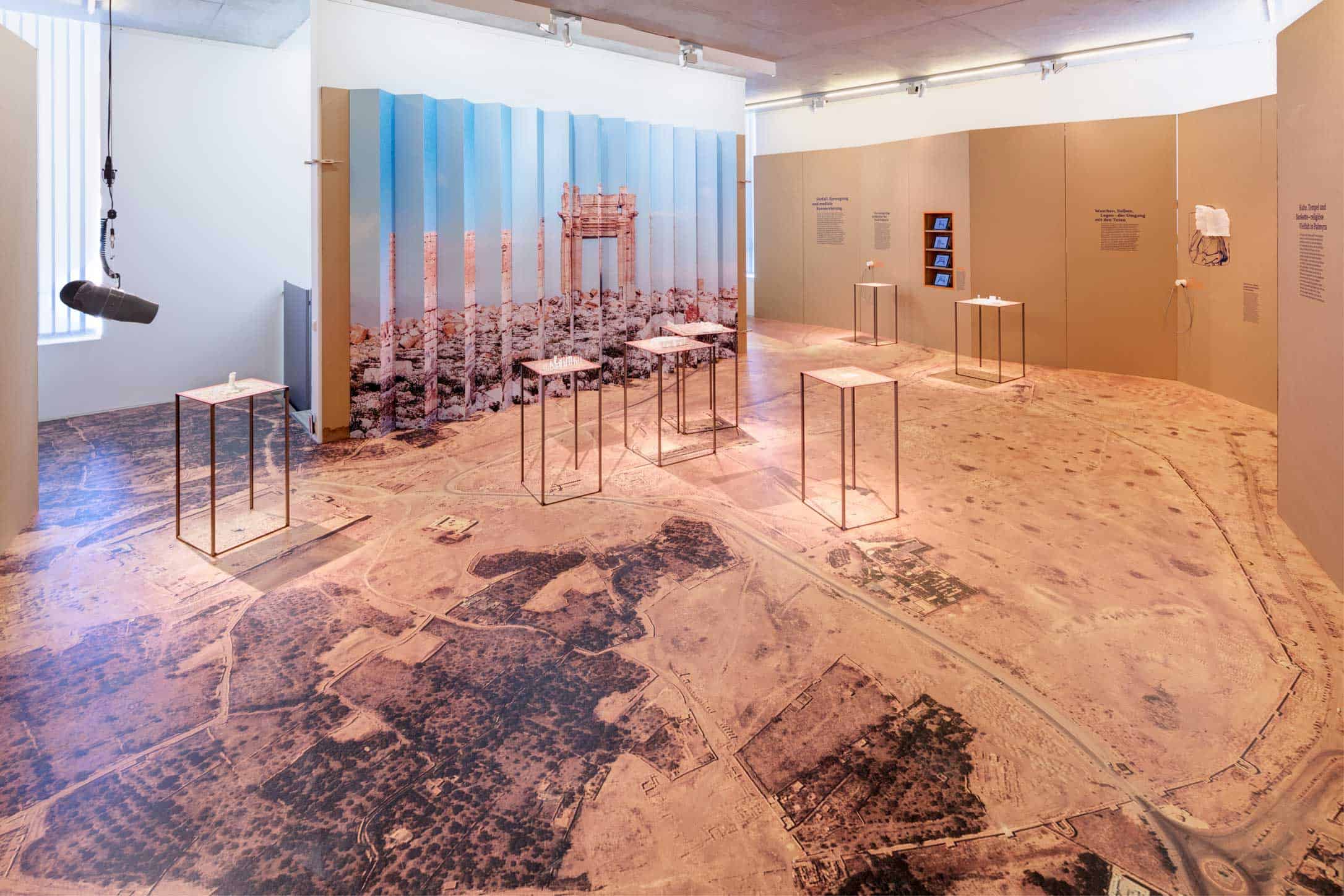
Room 4: Reconstruction
On the third floor, visitors finally have the opportunity to take a stance on the central question: Should Palmyra be rebuilt? And if so, in what form? Various media and architectural reconstruction options are presented, and opinions from different experts on the topic are highlighted. Visitors’ votes from the top floor are represented as percentages in a hologram on the ground floor. The more votes in favor of rebuilding Palmyra, the more complete the miniature funerary tower appears.
In this way, the exhibition’s title posed as a question—“Rebuild Palmyra?”—comes to life, reflecting in a strikingly open way the challenges of dealing with destroyed cultural heritage.
